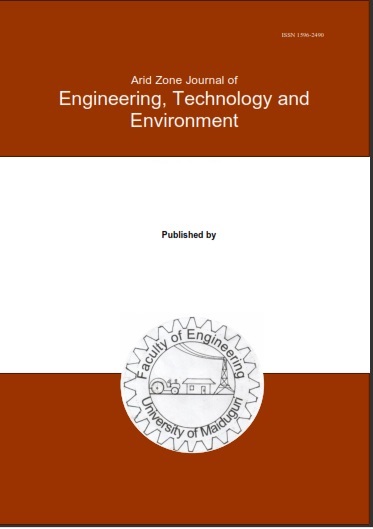Abstract
Tiger nut is a common nut in Africa which contains 24.5% oil. The extraction of this oil has been a major challenge to developing countries as most oil is locally extracted because of high cost of importation of oil expellers. A motorized tiger nut oil extracting machine was designed and fabricated consisting of four sections namely feeding, extraction, heating and power sections using available local materials, and was evaluated and optimized. The oil yield (OY), operational rate (OR), extraction efficiency (EE), throughput capacity (TC) and extraction loss (EL) of the machine were determined as affected by barrel temperatures (BT) of 30°C, 45°C, 60°C range, screw speeds (SS) of 60 rpm, 75 rpm, 90 rpm range., 0.5 mm, 1 mm, 1.5 mm range of choke clearance (CC) of the machine and yellow/brown varieties of tiger nut. The optimum ER, EE, OY, EL and TC values of 9.93 kg/hr., 89.02%, 23.78%, 1 kg/hr. and 50.06 kg/hr. were achieved at 60°C barrel temperature, 60 rpm and 0.5 mm choke clearance while the lowest values gotten at 30°C barrel temperature, 90 rpm and 1.5 mm choke clearance were 6.33 kg/hr., 52.40%, 13.90%, 0.33 kg/hr. and 33.96 kg/hr. respectively. Analysis of variance revealed that barrel temperature, screw speed, choke clearance and variety have significant effects on all the machine parameters evaluated at p<0.05 except for the EL. The evaluation results revealed that the brown tiger nut has more oil than the yellow tiger nut and that the developed machine is deemed efficient for small scale tiger nut oil production.

This work is licensed under a Creative Commons Attribution-NonCommercial-NoDerivatives 4.0 International License.
Copyright (c) 2023 Arid Zone Journal of Engineering, Technology and Environment published by University of Maiduguri, Nigeria

